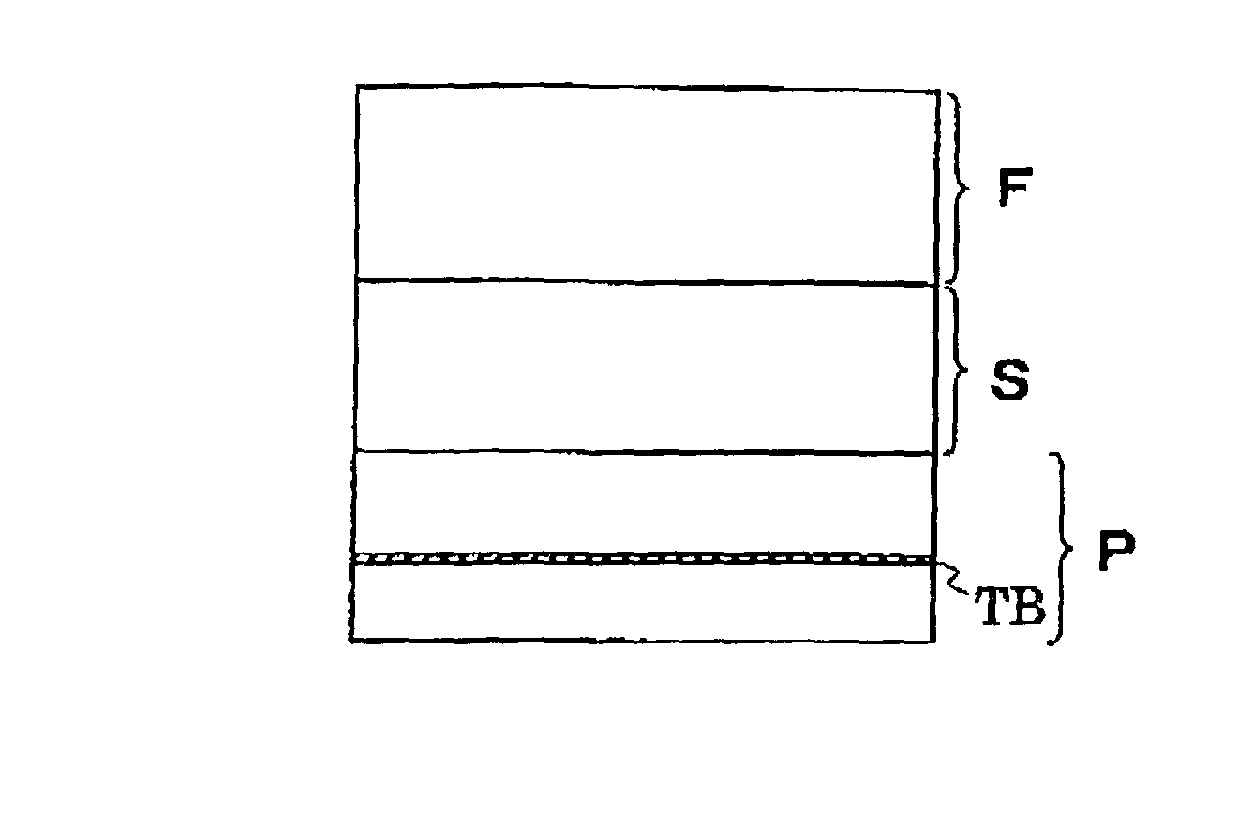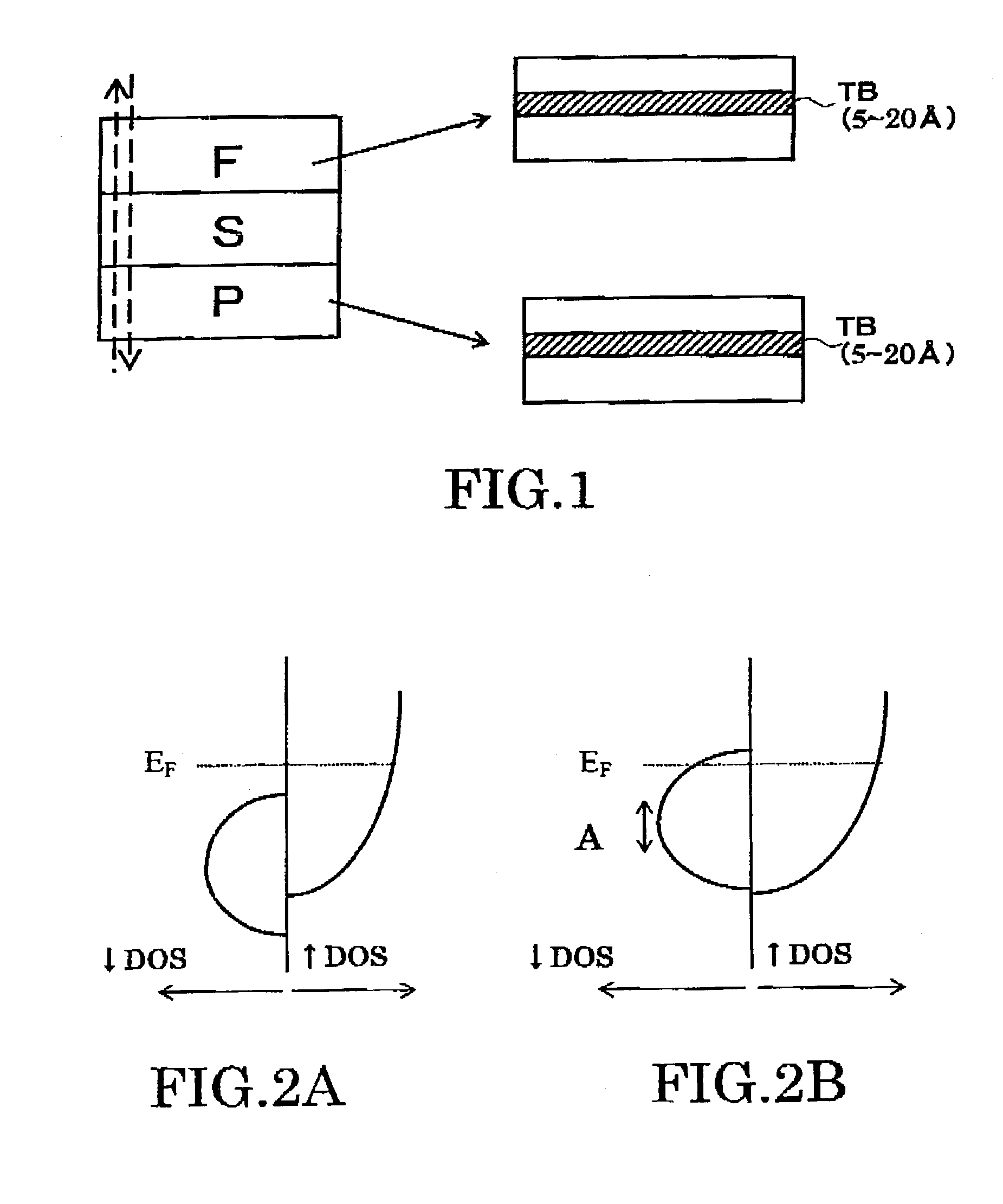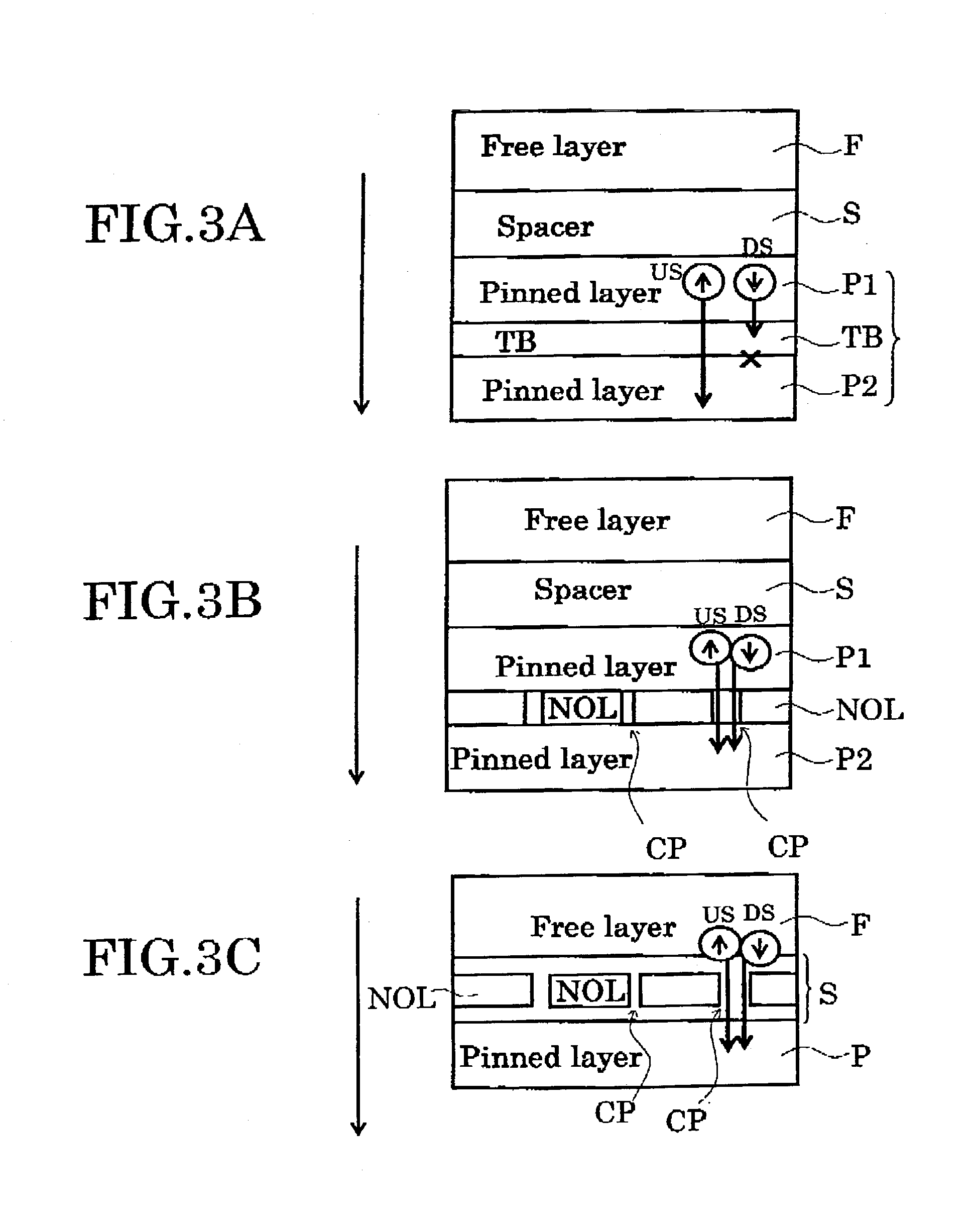Magnetoresistance effect element, magnetic head, magnetic reproducing apparatus, and magnetic memory
a technology of magnetoresistance and effect, which is applied in the field of magnetoresistance effect elements, magnetic reproducing apparatuses, and magnetic memory, can solve the problems of rapid decline difficult adoption from the viewpoint of shot noise and high frequency response, and disappearance of mr rate of change in this resistance level, etc., to achieve high sensitivity, high output, and stable obtained
- Summary
- Abstract
- Description
- Claims
- Application Information
AI Technical Summary
Benefits of technology
Problems solved by technology
Method used
Image
Examples
first example
[0185]The magnetoresistance effect element which has the following laminated structure was formed as the first example of the invention.
[0186]A lower electrode / tantalum (Ta) 3 nm / nickel iron chromium (NiFeCr) 5 nm / platinum manganese (PtMn) 10 nm / cobalt iron (CoFe) 4 nm / ruthenium (Ru) 0.9 nm / cobalt iron (CoFe) [4 nm / very thin oxide layer 0.5 nm / cobalt iron (CoFe) 1 mm / copper (Cu) 5 nm / cobalt iron (CoFe) 1 nm / nickel iron cobalt (NiFeCo) / copper (Cu)1 nm / tantalum (Ta)5 nm / upper electrode.
[0187]This example has structure where a very thin oxide layer TB is provided only near the interface with a spacer layer S of a pinned layer P, as shown in FIG. 14C.
[0188]In a case of this structure, 100 mΩμm2 to 200 mΩμm2 is obtained as AR, and 5 mΩμm2 to 30 mΩμm2 is obtained as AdR. Moreover, if the AR rise effect by the current constriction is combined, 500 mΩμm2 may be obtained as AR and 25 mΩμm2 to 150 mΩμm2 may be obtained as AdR, as will be explained later.
[0189]If a very thin oxide layer TB is ...
second example
[0271]Next, the example of the CPP type magnetoresistance effect element which can be used as a magnetic head is given and explained as the second example of the invention.
[0272]FIGS. 25 and 26 are conceptual diagrams which express typically the principal part structure of the magnetoresistance effect element concerning the embodiment of the invention. That is, these figures express the state where the magnetoresistance effect element is included in the magnetic head. FIG. 25 is a sectional view of the magnetoresistance effect element cut in parallel to the medium facing surface P which is opposite to a magnetic recording medium (not shown). FIG. 26 is a sectional view of the magnetic resistance effect element cut in the perpendicular direction to the medium opposite side P.
[0273]The magnetoresistance effect element illustrated in FIGS. 25 and 26 has a hard abutted structure. The lower electrode 2 and the upper electrode 6 are provided in the upper and lower sides of the magnetoresi...
third example
[0278]Next, a magnetic reproducing apparatus having inboard the magnetoresistance effect element of the embodiment will be explained as the third example of the invention.
[0279]That is, the magnetoresistance effect element or the magnetic head explained with reference to FIGS. 1 through 26 can be incorporated in a recording / reproducing magnetic head assembly and mounted in a magnetic reproducing apparatus.
[0280]FIG. 27 is a perspective view that shows outline configuration of this kind of magnetic reproducing apparatus. The magnetic reproducing apparatus 150 shown here is of a type using a rotary actuator. A magnetic reproducing medium disk 200 is mounted on a spindle 152 and rotated in the arrow A direction by a motor, not shown, which is responsive to a control signal from a controller of a driving mechanism, not shown. The magnetic reproducing apparatus 150 shown here may have a plurality of medium disks 200 inboard.
[0281]The medium disk 200 may be of a “lateral recording type” i...
PUM
| Property | Measurement | Unit |
|---|---|---|
| thickness | aaaaa | aaaaa |
| orientation dispersion angle | aaaaa | aaaaa |
| size | aaaaa | aaaaa |
Abstract
Description
Claims
Application Information
 Login to View More
Login to View More - R&D
- Intellectual Property
- Life Sciences
- Materials
- Tech Scout
- Unparalleled Data Quality
- Higher Quality Content
- 60% Fewer Hallucinations
Browse by: Latest US Patents, China's latest patents, Technical Efficacy Thesaurus, Application Domain, Technology Topic, Popular Technical Reports.
© 2025 PatSnap. All rights reserved.Legal|Privacy policy|Modern Slavery Act Transparency Statement|Sitemap|About US| Contact US: help@patsnap.com



